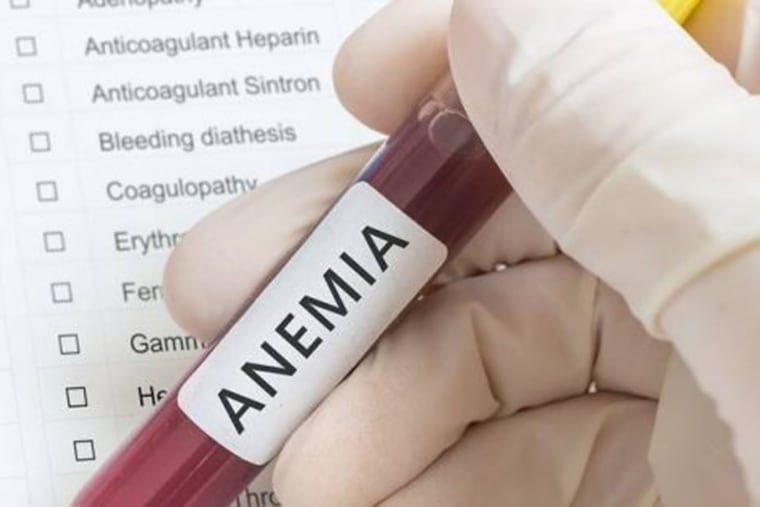Medical mystery: How an orthopedic surgeon discovered what caused his patient’s anemia
His primary care physician found that he had anemia, or a low blood count. For someone who was otherwise healthy, this finding was unusual. But what was the source?

Fatigue is common. As the father of two girls under age 4, I certainly get tired. But fatigue that won’t go away is a reason to call your doctor.
A 54-year-old man came to our office with fatigue, loss of appetite and some mild pain in his right groin area. He had both of his hips replaced about five years ago and had done very well. Until about three months ago, he was still very active, working as a firefighter and a high school football coach, so his sudden lack of energy was unusual.
When his symptoms started, he went to see his primary care physician, who ordered routine blood tests and found that he had anemia, or a low blood count. His hemoglobin, or blood count level, was quite low at 9 g/dL (normal range is 13-16 g/dL). For someone who is otherwise healthy, this finding was unusual. It could certainly explain his fatigue, as low blood counts can cause your tissues to not get the oxygen that they need to function.
There are many causes of anemia including dietary (lack of iron and vitamins), hereditary conditions, gastrointestinal problems, and even cancer. Our patient had an extensive workup for his anemia, he saw an oncologist who performed a bone marrow biopsy and ruled out any malignancy. He also had an endoscopy and colonoscopy to search for a gastrointestinal bleed, and fortunately those procedures were normal. No one could figure out the cause of his anemia.
Solution
The patient came to our orthopedic practice not because of his anemia, but because he had difficulty lifting his hip and was walking with a limp. X-rays of both of his hip replacements were completely normal.
Despite the normal X-rays, groin pain following a hip replacement should prompt further workup. While pain in the outside of the hip or buttock area can often be from bursitis or a pinched nerve in the lower back, groin pain can signal a problem with the hip prosthesis.
Although it happens only in 1% of patients, infection can cause groin pain, even several years after a hip replacement. To diagnose an infected hip or knee replacement, we order a blood test, looking at inflammatory markers and an aspiration of the joint fluid. Sure enough, after aspirating cloudy fluid from both of his hips, we diagnosed an infection with a common bacterium called Staphylococcus aureus.
Treatment for a periprosthetic joint infection, or an infection around a hip or knee prosthesis, often requires multiple surgeries and a long course of antibiotics. As bacteria like adhering to foreign objects such as a joint replacement, we first remove the prosthesis and place a temporary spacer with antibiotic-loaded bone cement. After a few weeks of intravenous antibiotics, the patient then undergoes a second surgery to place a new hip prosthesis.
Our patient’s bilateral hip infection was the underlying cause of his anemia and resulting fatigue. Following his two-stage revision procedure, his hemoglobin and energy levels returned to normal. He was walking pain free and back on the football sidelines three months following his last surgery. By six months, he was running into burning buildings, fighting fires, and saving lives.
While orthopedic surgeons often do not come to mind as the first physicians to diagnose causes for low blood counts, we pride ourselves on being doctors first and surgeons second. Patients who have persistent groin pain following their hip replacement should talk to their orthopedic surgeon, as well. This unusual case of a hip infection causing anemia and fatigue in an otherwise healthy middle-aged male illustrates why physicians evaluate the whole patient, not just a particular body part or what we find on an X-ray.
P. Maxwell Courtney is a board-certified orthopedic surgeon specializing in hip and knee replacement surgery at Rothman Orthopaedic Institute.